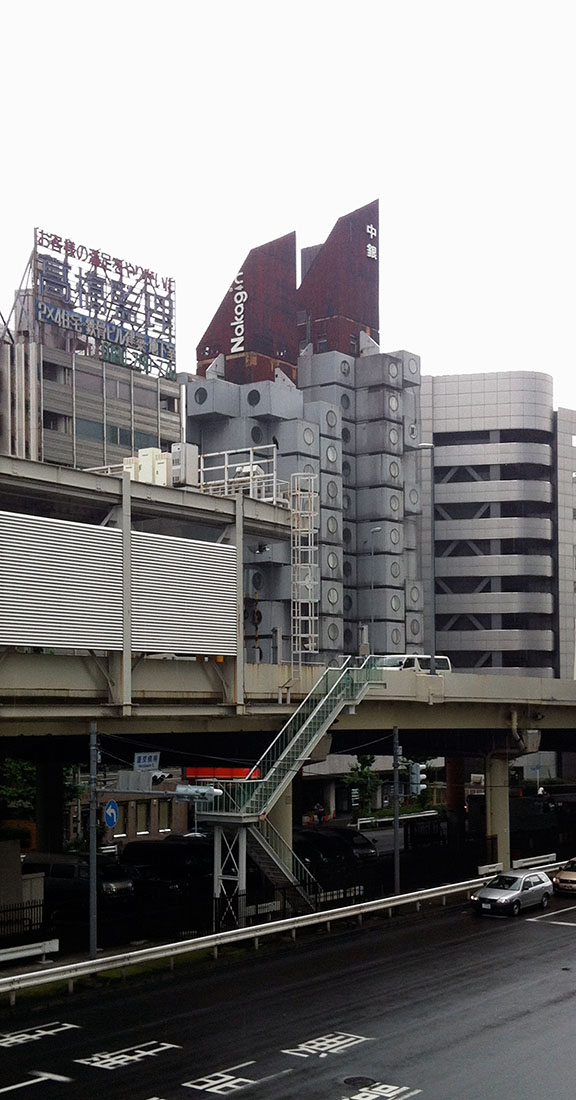 |
 |
 |
 |

Nakagin Capsule Tower
16-20, Ginza 8-chome, Chuo-ku, Tokyo
1972
The Nakagin Capsule Tower by Kisho Kurokawa is considered to be the built manifesto of the Metabolist Movement. It is the world's first example of
capsule architecture built for actual use. The vertical building shafts - containing stairwells, elevators and building technics - ensure the supply
of the docked capsules. Each capsule is connected to the supply core with only four high-tension bolts. This should ensure that the
capsules could be easily separated and replaced. However, up to now no capsules were separated. The individual and standardized modules
should have been prefabricated industrially and sold in large numbers.
At the time of its construction, the building with its modest height of 53.5 meters towered obve the exclusive shopping quarter Ginza in Tokyo.
Two massive circulation towers with stairwells and elevators support and supply a multitude of capsules that have actually been plugged in.
An urban elevated motorway passes right in front of the building, revealing a view of the dramatically sharpened ends of the towers.
The darkened ends of the cores are clad with sheets of corten steel, so that they stand out against the cluster of the light capsules. From this perspectiv,
the towers look like carrier rockets ready to transport its capsules into space. A total of 140 modules are attached to the two access cores and are
spread over 11 respectively 13 floors. This concept should allow the replacement or extension of capsule space according to the individual needs.
The individual modules can be joined to form larger units. Each capsule measures 2.3 m × 3.8 m × 2.1 m. Kurokawa points out that the area of four tatami mats
corresponds to the dimensions of a traditional japanese teahouse. The capsules were prefabricated and assambled in a factory. The exterior of the capsules
consists of galvanized steel panelling which was coated with anti-rust paint and sprayed with a thick skin of gloss paint. The perfectly circular windows
were equipped with the famous radial sun proctection blinds (todey, just a few of the blinds remain). The design of the interior features built-in appliances
and furniture, and remembers the design of space capsules. Each capsule was hoisted by a crane and fastened to the concrete core shaft.
The capsules can be used as small residential or office units. They are designed to cater to the individual in form of an apartment or studio space.
By connecting units, it should have been possible to accommodate a family. The capsules were not sold to a central firm but on the free market.
As a consequence, the building has an incredible large ownership.
In the meantime, the building has lost a lot of its charisma. In the past years there were built far higher buildings in the neighborhood,
reaching up to 200 m heigt. The immediate surroundings were redensified as well, and the formerly two free-standing towers are integrated
in a dense edification. Today the building is in an extremely bad state. Depending on the location and expositon to wind and weather,
the capsules have suffered with differing intensities. After forty years, the tower is in need for a considerable rehabilitation.
Apart from asbestos burdens the building shows moisture damage due to leaky water pipes. Remedying appears uneconomical.
The majority of the owners' association agreed in 2008 for demolition and new construction. It is to be feared that a pioneering work in the field
of prefabrication will be destroyed. A call to make the Nakagin Capsule Tower to a world heritage and to protect the building found little echo.
